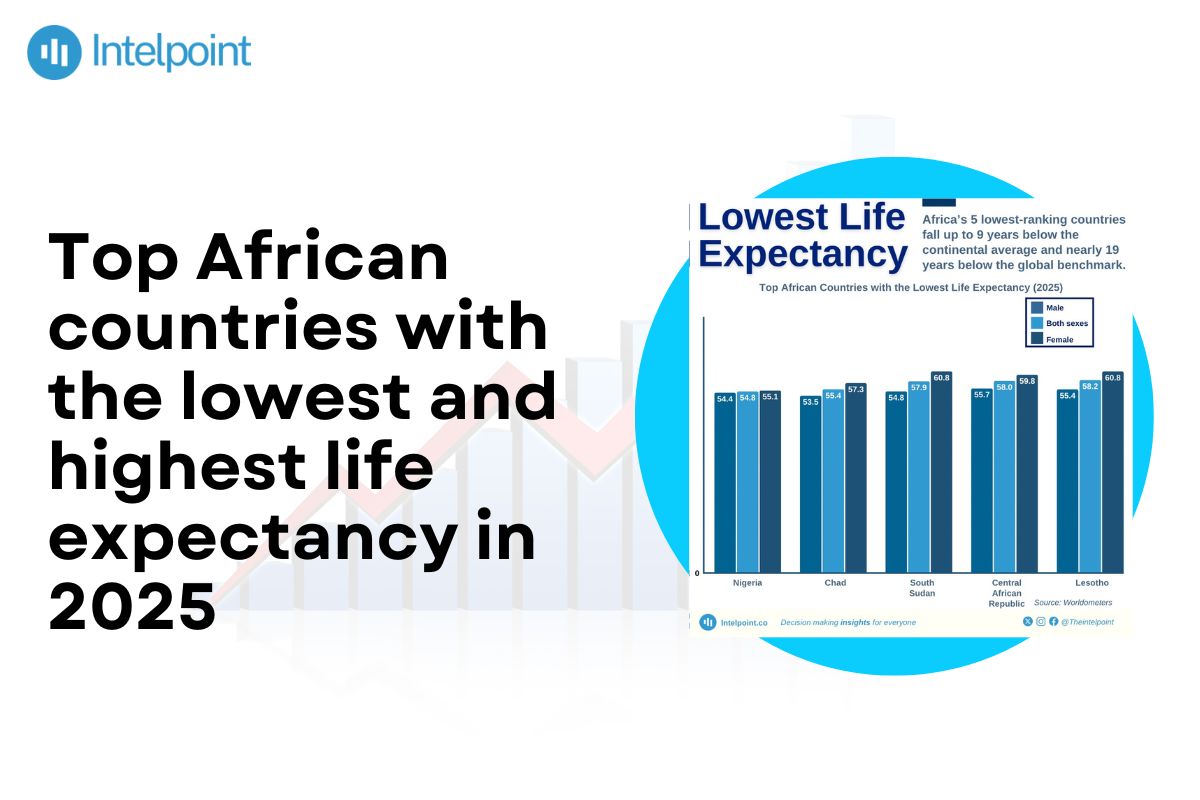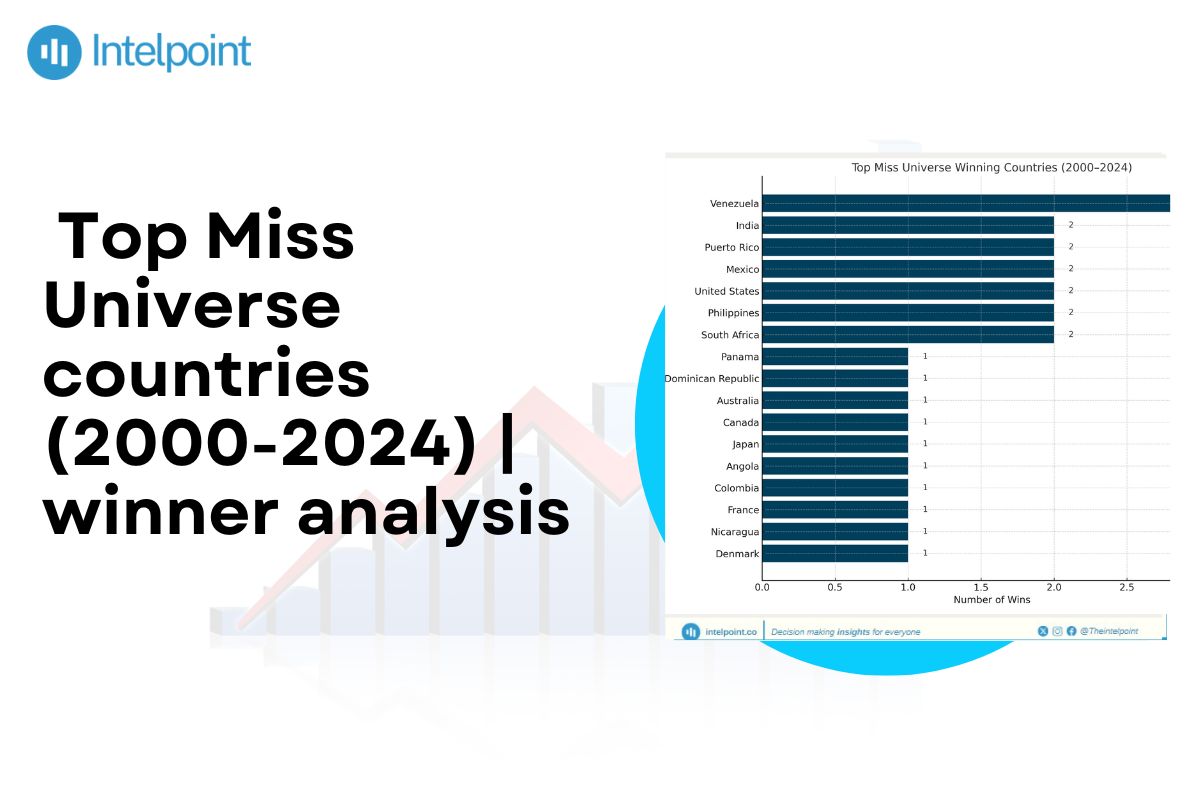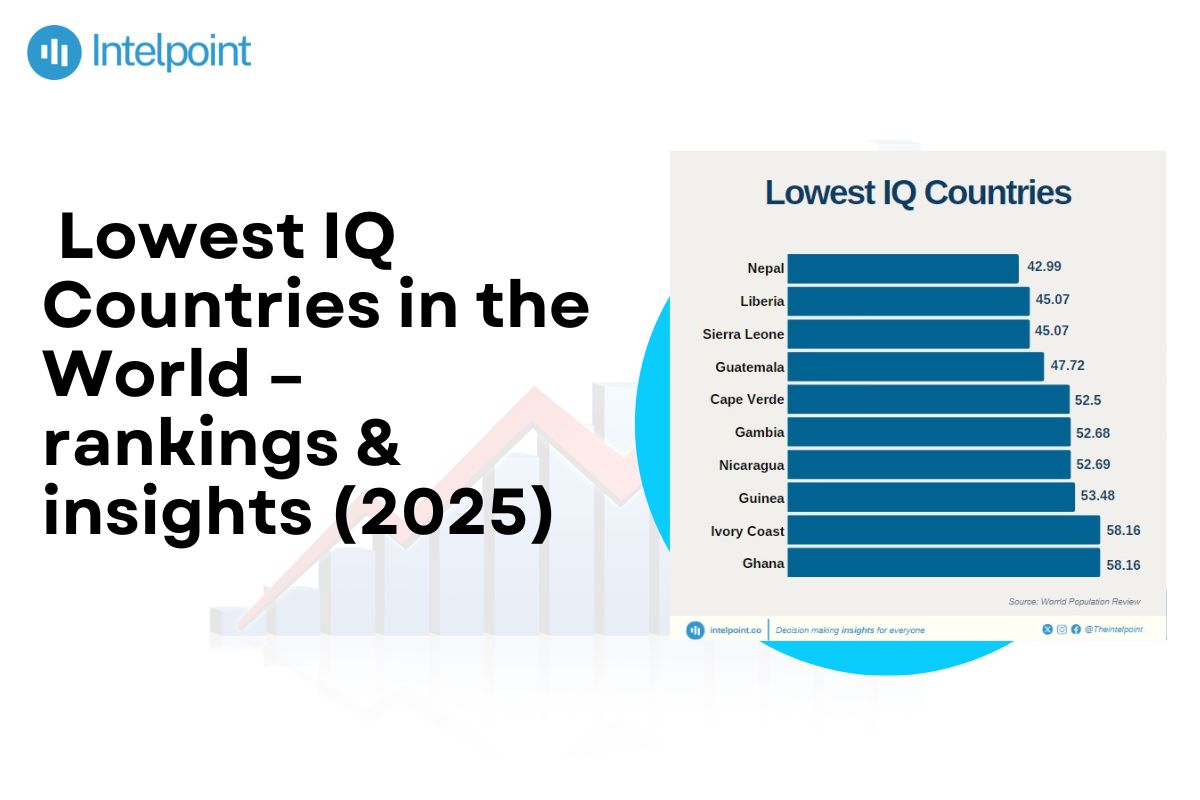A child born in Mauritius in 2025 can expect to live 75.27 years, nearly 17 years longer than one born in the Central African Republic, where life expectancy is just 57.95 years. Africa’s average life expectancy of 64.2 years remains well below the global average of 73.5 years, underscoring deep disparities in healthcare, governance, and socio-economic conditions.
Life expectancy varies widely across the continent. Tunisia leads with 76.97 years, while countries like Chad (55.43 years) and Lesotho (58.22 years) struggle due to poverty, limited healthcare infrastructure, and high disease burden. Though healthy African life expectancy trends have increased by 3 years since 2010, progress remains uneven, impacting everything from productivity to political stability.
In this article, we’ll compare the African countries with the lowest and highest life expectancy in 2025. It also provides a high-level demographic analysis of Africa by comparing national life expectancy data across the continent.
Key takeaways
- Africa’s average life expectancy is 64.2 years, nearly 9.3 years below the global average of 73.5.
- Tunisia (76.97) tops the list, while Nigeria (54.78) ranks lowest—a 22-year gap across the continent.
- High-ranking countries like Mauritius and Seychelles invest over 5% of GDP in healthcare and maintain 90 %+ vaccination rates.
- Low-ranking countries such as Chad and South Sudan report under-five mortality rates above 100 per 1,000 births and limited health access.
- Raising the African life expectancy trends could reduce productivity losses (up to 6% of GDP) and improve regional stability.
Methodology: Data sources and analysis
We compiled this report using data from World Population Review and Worldometer. These two widely used demographic databases aggregate statistics from credible sources like the World Health Organization (WHO), the United Nations, and the World Bank. These platforms offer up-to-date life expectancy figures across countries, including sex-disaggregated data and historical trends, making them suitable for high-level comparisons and regional insights.
Our selection of countries focuses solely on African nations. We extracted life expectancy values for both sexes as of 2025, and where relevant, included breakdowns by gender. The top five and bottom five countries were chosen based on their total life expectancy (average across male and female populations).
Life expectancy refers to the average number of years a person is expected to live, assuming current mortality rates remain constant throughout their lifetime. This metric is influenced by multiple factors, including:
- Healthcare access and quality
- Economic development and income levels
- Nutrition and sanitation
- Prevalence of infectious diseases
- Conflict and political instability
This article includes charts, graphs, and comparison tables illustrating national life expectancy rates. It explores their connection to broader indicators like healthcare investment and GDP per capita to help visualize the disparities.
Top African countries with the highest life expectancy
Several African nations stand out for their impressive life expectancy rates, reflecting healthcare, education, and socio-economic development advancements. Below is an analysis of these countries:
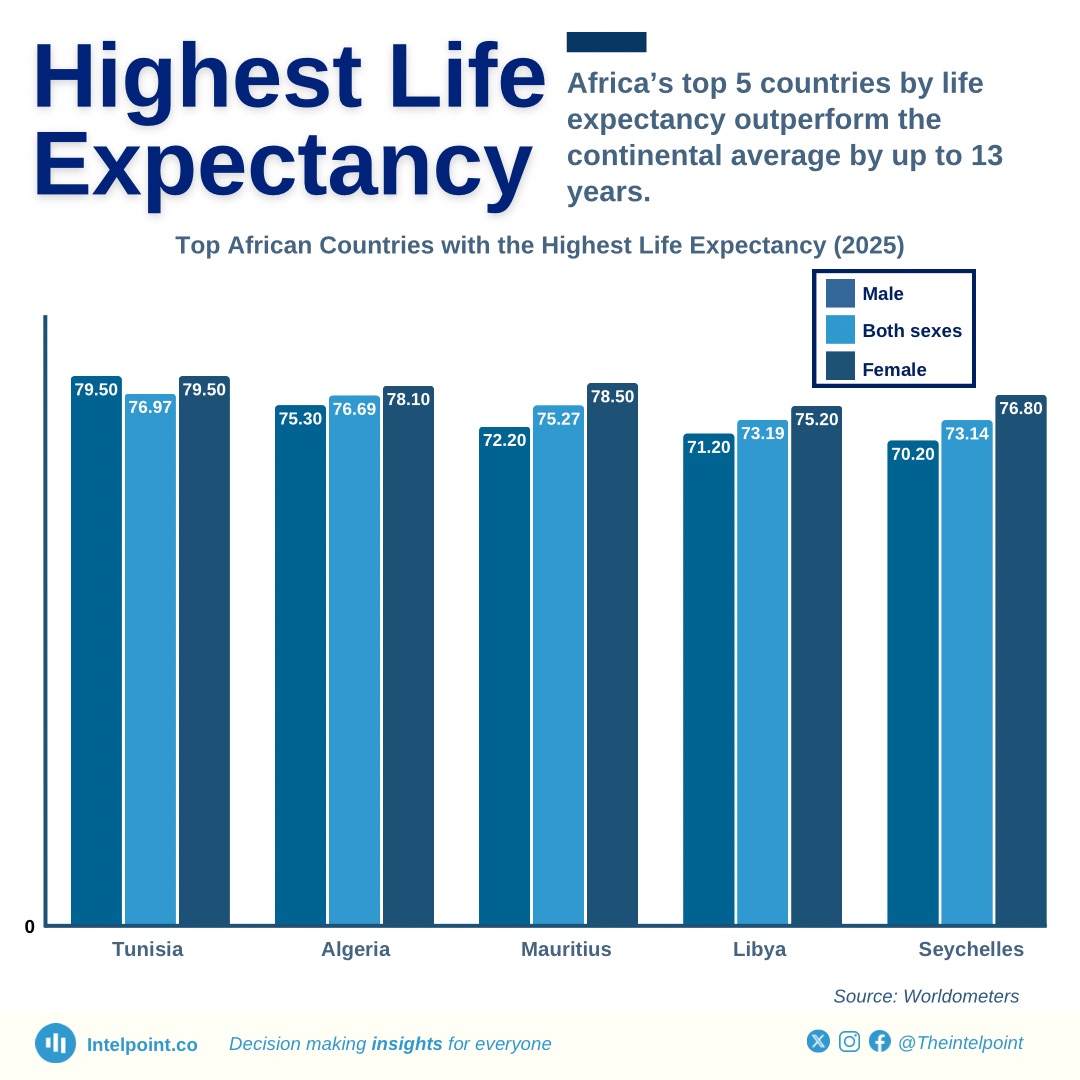
1. Tunisia
Life expectancy: 76.97 years
Female: 79.5 years
Male: 74.3 years
Tunisia tops the list with a figure of 12.77 years, above the African average and 3.47 years above the global average. Life expectancy here has increased from 74.4 years in 2010 to nearly 77 years in 2025, thanks to expanded healthcare access and improved maternal and child survival rates.
2. Algeria
Life expectancy: 76.69 years
Female: 78.1 years
Male: 75.3 years
Algeria's life expectancy has increased by more than four years since 2005, from 72.8 to 76.69. Its 2025 figure is 12.49 years above Africa’s average and 3.19 years above the global average, supported by heavy investment in public hospitals and a national vaccination program.
3. Mauritius
Life expectancy: 75.27 years
Female: 78.5 years
Male: 72.2 years
Mauritius's life expectancy grew from 71.8 years in 2000 to 75.27 in 2025, a 5-year increase driven by universal healthcare, high literacy rates, and a relatively strong economy. It ranks 11.07 years above Africa’s average and 1.77 years above the global average. Mauritius, one of the richest countries in Africa (health), maintains universal healthcare and high vaccination rates.
4. Libya
Life expectancy: 73.19 years
Female: 75.2 years
Male: 71.2 years
Before political instability in 2011, Libya’s life expectancy had climbed steadily from the mid-60s to over 72 years. Despite setbacks, it now stands 8.99 years above Africa’s average, nearly matching the global mark. Much of this resilience relies on its earlier investments in public health.
5. Seychelles
Life expectancy: 73.14 years
Female: 76.8 years
Male: 70.2 years
Seychelles has maintained a life expectancy above 70 years since the early 2000s. It now stands 8.94 years above the African average, supported by strong education systems, environmental quality, and access to healthcare. It’s just 0.36 years below the global average.
Top African countries with the lowest life expectancy
Despite modest improvements continent-wide, several African countries record some of the world’s lowest life expectancy rates, often driven by conflict, poor infrastructure, and weak healthcare systems. These are the countries with the lowest life expectancy in Africa in 2025:
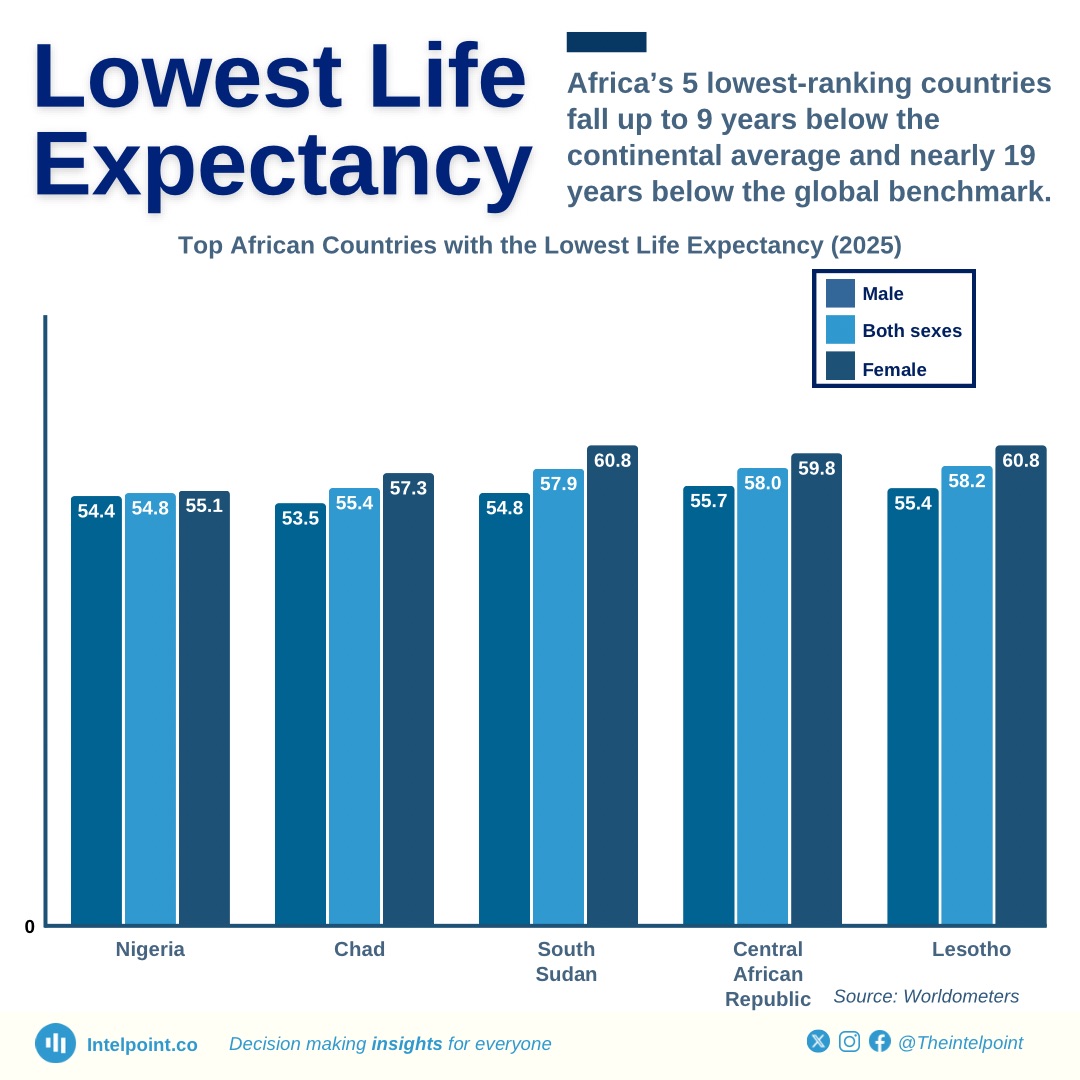
1. Nigeria
Life expectancy: 54.78 years
Female: 55.1 years
Male: 54.4 years
Nigeria ranks lowest in Africa, falling 9.42 years below the African average and 18.72 years below the global average. Life expectancy declined slightly from 51.3 years in 2010, reflecting persistent issues in maternal care (with a maternal mortality rate of 1.1k deaths per 100,000 births) and regional instability in the north. One in ten Nigerian children dies before age five.
2. Chad
Life expectancy: 55.43 years
Female: 57.3 years
Male: 53.5 years
Chad’s life expectancy is 8.77 years below Africa’s average and 18.07 years below the global average. The country’s under-five mortality rate exceeds 110 per 1,000 live births, and just one in four births is attended by skilled personnel. Life expectancy stood at 50.1 years in 2010, marking slow progress despite international aid.
3. South Sudan
Life expectancy: 57.85 years
Female: 60.8 years
Male: 54.8 years
South Sudan's life expectancy is 6.35 years below Africa’s average and 15.65 years below the global average. It was 57.5 years in 2010, rising by only 0.35 years despite the country gaining independence. Over 7 million people require humanitarian aid annually; vaccine coverage remains among the lowest globally.
4. Central African Republic
Life expectancy: 57.95 years
Female: 59.8 years
Male: 55.7 years
Life expectancy in CAR is 6.25 years below Africa’s average and 15.55 years below the global benchmark. In 2000, the figure stood at 46.9 years, a 10-year increase over two decades, yet still among the world’s worst. Armed conflict, low immunization rates, and malaria account for a significant share of deaths.
5. Lesotho
Life expectancy: 58.22 years
Female: 60.8 years
Male: 55.4 years
Lesotho’s figure is 5.98 years below the African average and 15.28 years below the global average. Though life expectancy improved from 48.8 years in 2000, Lesotho has the second-highest HIV/AIDS prevalence in the world at 21.1%. Antiretroviral coverage is improving, but access gaps remain, especially in mountain regions.
Comparative analysis: Visualizing the disparities
The gap between Africa's highest and lowest life expectancy figures spans over 22 years, with Tunisia at 76.97 years and Nigeria at just 54.78 years. While the top countries benefit from decades of investment in healthcare and education, the bottom group is weighed down by conflict, disease, and underfunded health systems.
For instance, Mauritius spends over 5% of its GDP on health, compared to less than 2% in Chad. Countries with higher literacy rates and access to clean water, like Seychelles and Algeria, consistently outperform those without these services.
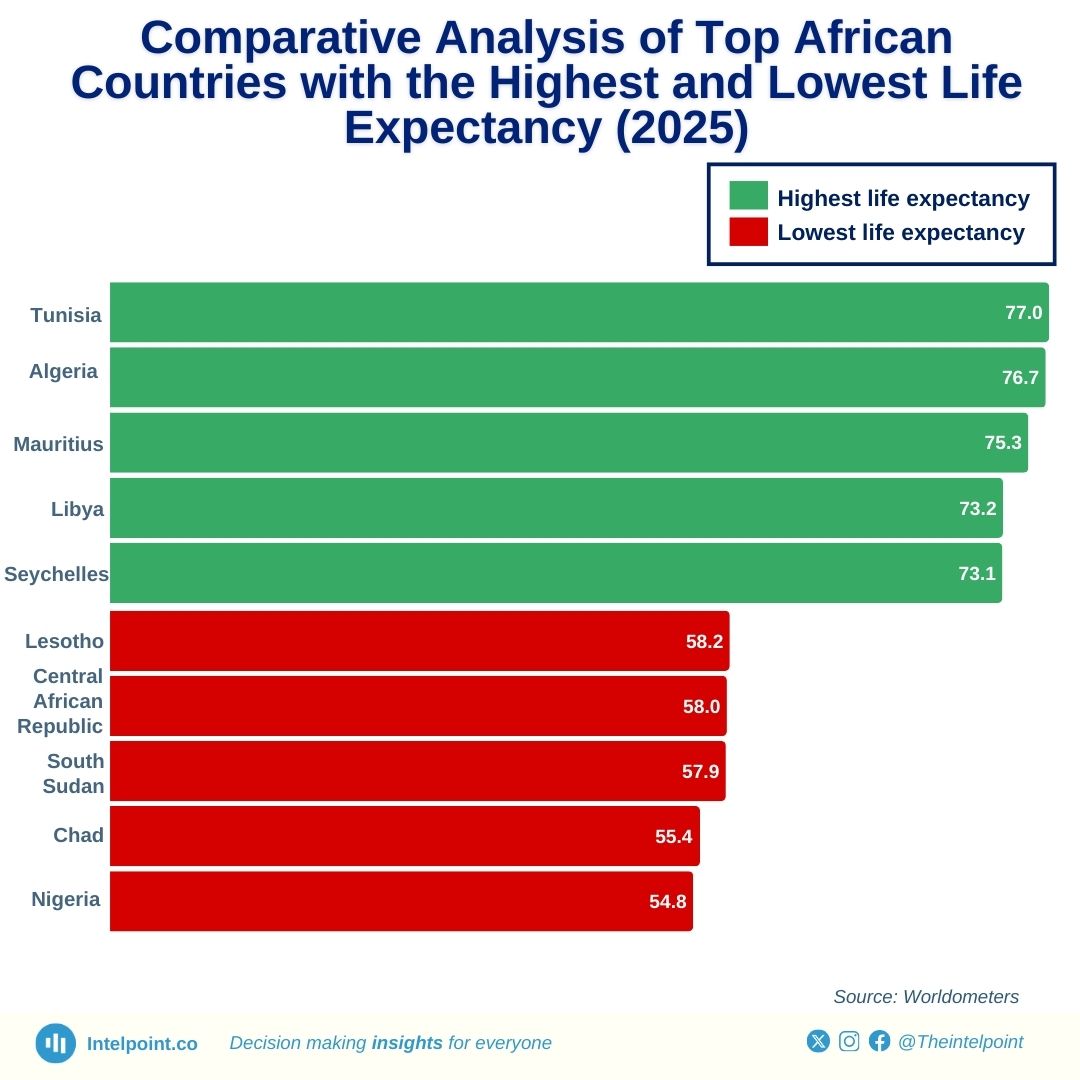
Implications for Africa’s future
The gap between Tunisia (76.97 years) and Nigeria (54.78 years) is over 22 years, underscoring sharp inequalities in health access, governance, and living conditions across the continent.
Policy-Making
Countries with life expectancy above 75 years (Tunisia, Algeria, Mauritius) have over 90% vaccination coverage, compared to less than 40% in Chad and South Sudan. Skilled birth attendance is over 95% in Algeria, but under 30% in Nigeria and Chad. Healthcare spending exceeds 5% of GDP in top performers, versus 1.2–1.8% in low performers, which could drive similar progress and boost long-term African life expectancy trends.
Investment & Development
Nations with a life expectancy above 73 years have GDP per capita above $4,000. In contrast, Chad, Nigeria, and CAR all sit below $2,500 GDP per capita, with higher dependency ratios. With a life expectancy of 75.27 years, Mauritius ranks #1 in Africa on the Human Development Index (HDI). With the lowest life expectancy, Nigeria has the world’s highest number of out-of-school children (over 10 million).
Regional Stability
High-mortality countries also face higher child dependency ratios, often exceeding 80%. Nations with low life expectancy report higher internal displacement rates—e.g., over 3 million IDPs in Nigeria as of 2024. Economic productivity losses due to poor health can cost African countries up to 6% of GDP annually (WHO estimate).
Raising life expectancy even by 5 years in low-performing countries could prevent millions of premature deaths, strengthen economies, and reduce the strain on humanitarian systems. Widening gaps in population health across Africa could increase economic strain and political instability.
Conclusion
Africa’s life expectancy gap—over 22 years between the highest and lowest ranking countries—reflects stark inequalities in healthcare access, education, and economic conditions. While countries like Tunisia, Algeria, and Mauritius show what’s possible with sustained investment, others like Nigeria and Chad continue to lag due to preventable health crises and systemic underinvestment.
If you found this data insightful, share your thoughts in the comments. You can also subscribe for more in-depth demographic and economic analysis, and don’t forget to share this article to keep the conversation about Africa’s public health future going.

